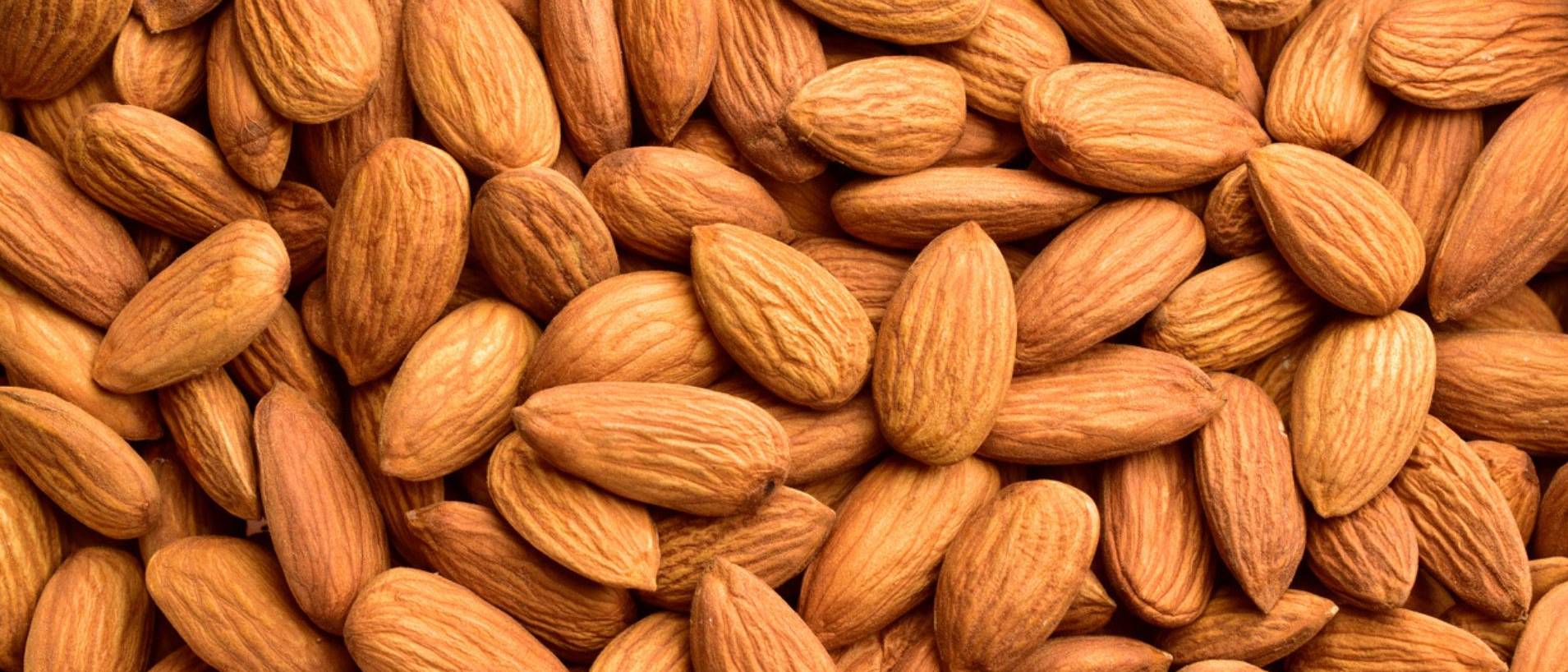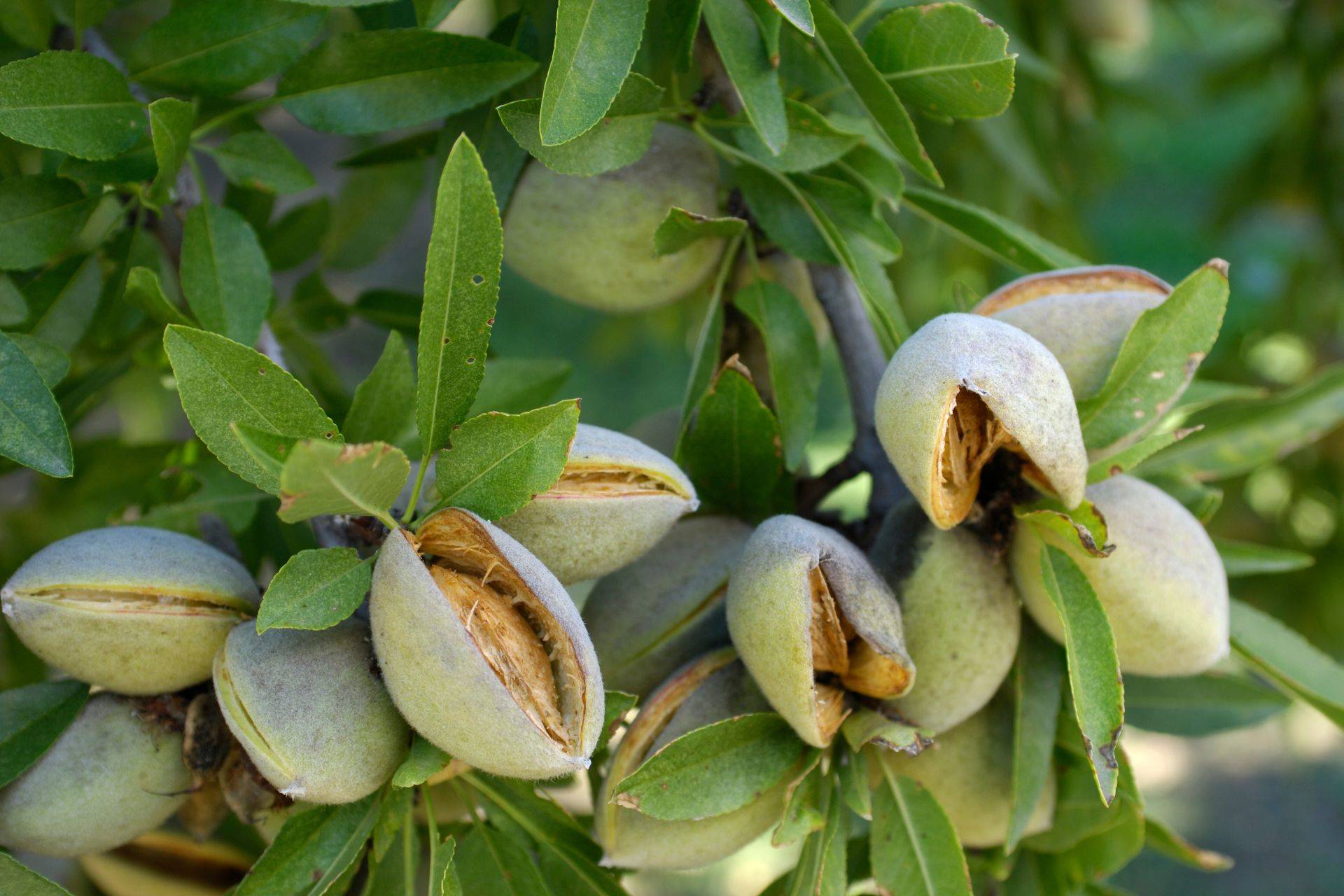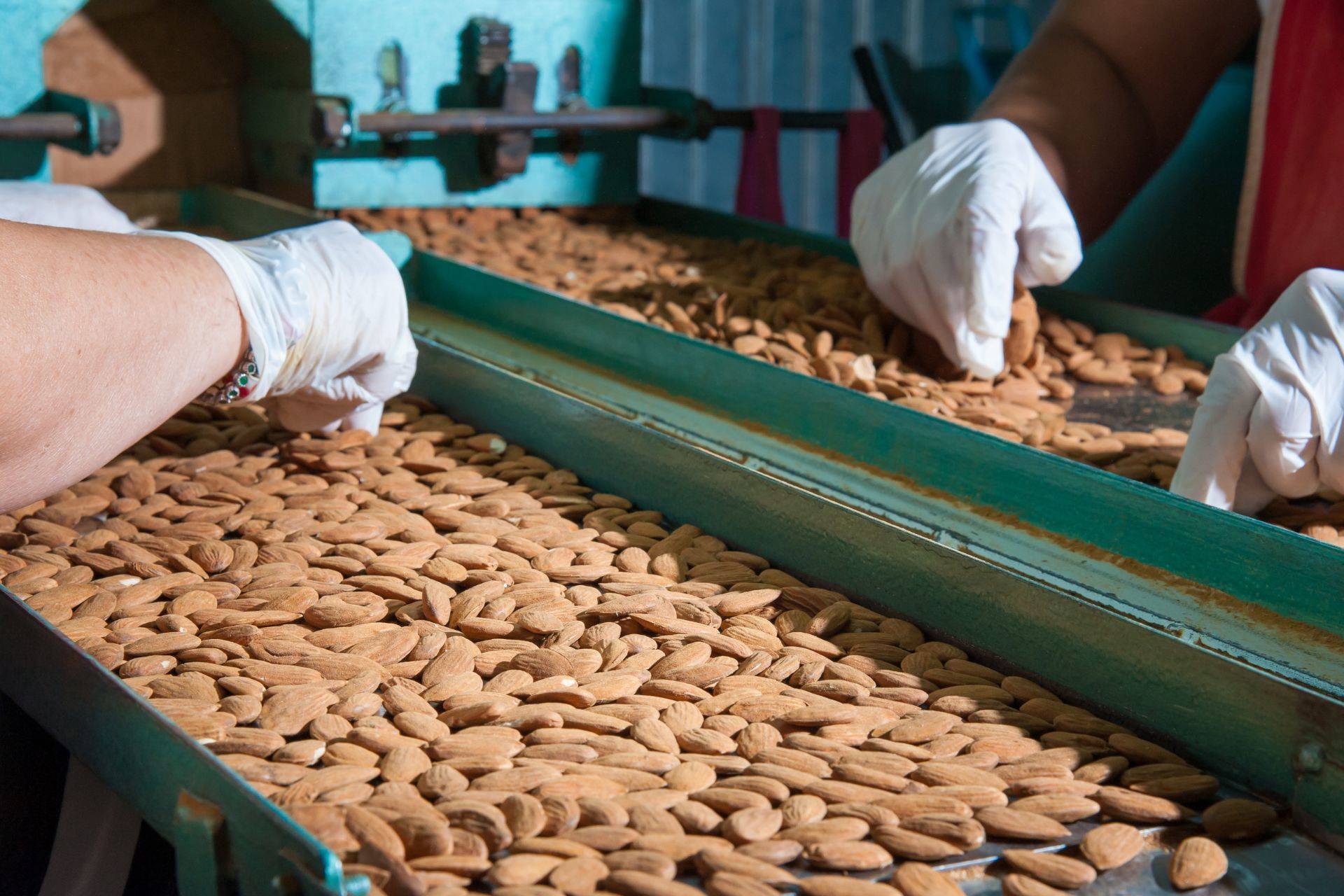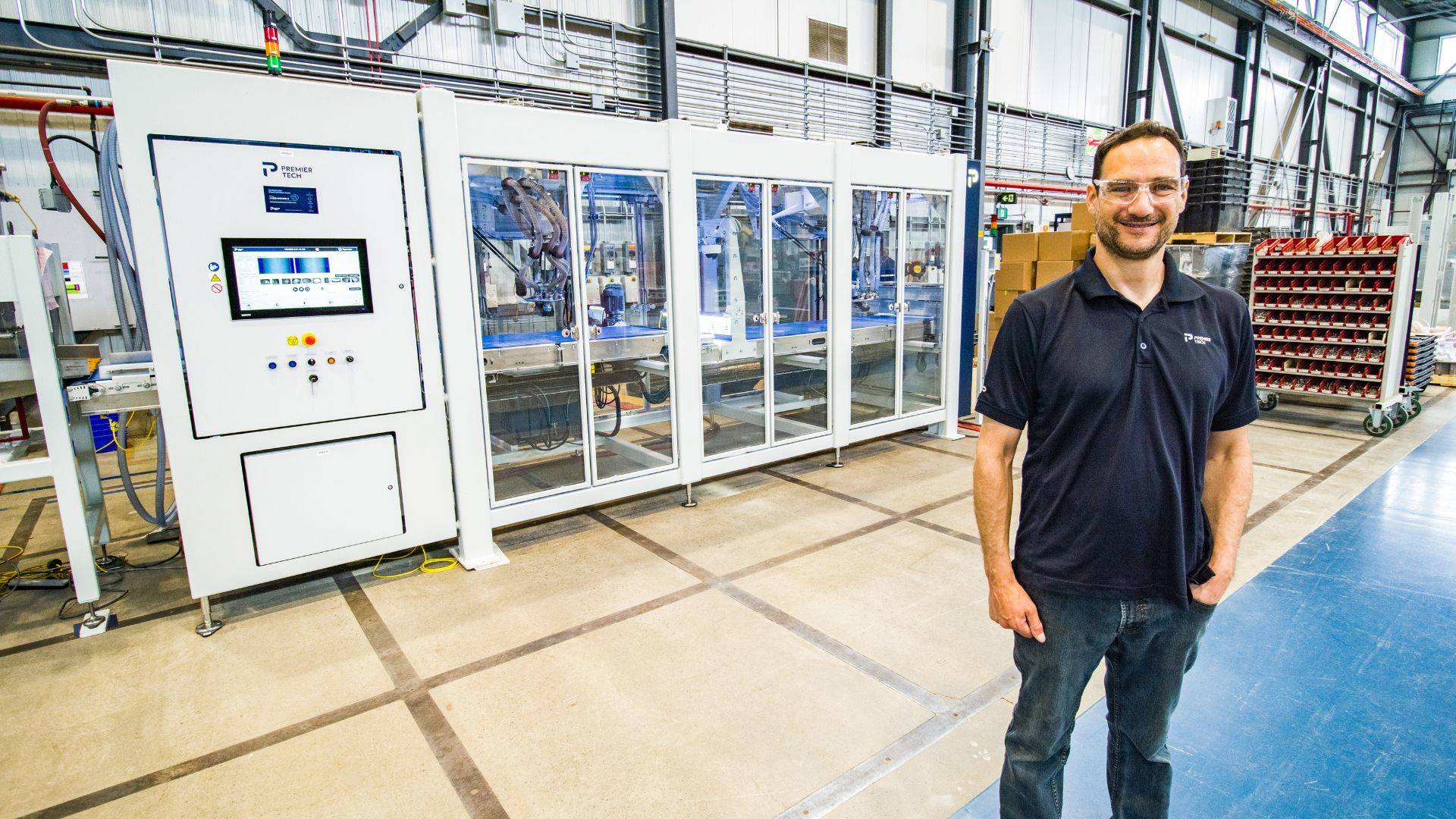The Evolution of Almond Processing and Sorting

In recent years, almonds have been all the rage, overtaking most other nuts in sales to take the title of America’s second favorite nut behind peanuts. Almonds are a versatile snack that can be used in a variety of ways including in almond butter, trail mix, salads, granola, and even as almond flour.
However, almonds can be a very tricky product to process, which explains their relatively high cost.
Almonds have been harvested for thousands of years, but the methods for picking and sorting them have evolved over time. From ancient hand-picking methods to modern-day harvesting and optical and robotic sorting, the almond industry has come a long way in terms of efficiency and quality control.
Let’s take a look at a short history of almond processing and sorting and where we are at today.
Hand-picking and sorting
As mentioned above, almonds are quite a difficult product to process. Highly irregular in terms of shape and size and often mixed with stray twigs and rocks, almonds require special attention for quality control.

The earliest method of harvesting almonds was by workers who climbed almond trees to pluck the ripe almonds from the branches by hand. After harvesting, the almonds would also be cracked and sorted by hand, separating good from bad. As is evident, this method was extremely labor-intensive and time-consuming.
Mechanical harvesting
In the early 1900s, mechanical harvesting was introduced into the almond industry. The first mechanical harvesters were powered by steam and used a shaker mechanism that could be attached to the trunk or branches of an almond tree. When the mechanism vibrated, it would cause the nuts to fall to the ground, where workers could use rakes and brooms to collect them.
Today, most almond harvesting is still done using these mechanical harvesters, which has vastly improved efficiency and also reduced the amount of damage to trees.
Sorting and packaging
Following the harvest, almonds need to be transported to a processing plant for sorting and cleaning before packaging, a process which typically requires a significant human workforce.
Unfortunately, foreign materials come mixed with the nuts, creating the need for thorough sorting, which is still done by hand.

If you can picture it, the final step of almond processing in most operations today is, quite simply, a conveyor belt with dozens of workers hunched over on each side staring at thousands of almonds, picking out twigs, rocks, bug-infested almonds and broken nuts.
This type of work is very physically demanding and monotonous, which means mistakes happen often. It also involves the kind of repetitive movements and positions that are known to cause stress on muscle tissue and result in long-term injuries for workers.
Enter the power of robotic equipment.
Optical sorting and robotic processing
Today, modern technology has revolutionized almond sorting with a kind of automation called optical sorting. Using a set of sensors and cameras, robots are able to sort and process up to 5,000 pounds of almonds per hour on a conveyor belt. Plus, unlike humans, they are able to operate continuously, 24 hours a day.
But perhaps the most significant benefit of robotic almond sorters is their superior grading accuracy compared to human workers.
Programming a nut sorting robot's software to perform optical sorting according to USDA parameters for nut size and shape, as well as acceptable chip sizes, can eliminate any subjective grading that is typical with human sorting.
This almond sorting technology provides an objective and consistent grading system that ultimately results in a higher-quality product.
Ready to get started with a robotic almond sorting machine?
If you’re in the market for almond sorting equipment, we recommend the PRAIRIE SCP-2100. This machine leverages the power of AI, computer vision, and robotics to process almonds. Our patented technology picks out and sorts debris and foreign materials based on their shape, colour, damage, and texture.
Plus, the rejected material is automatically separated into different categories and bins for easy repurposing (such as for almond milk or flour) and a quick return on investment.

Adding an extra machine to your almond processing line might seem costly, but improved yield and working conditions means these kinds of sorters pay for themselves in a matter of months. With almonds projected to gain even more popularity in the upcoming years, it's an opportune time to position yourself for success.
Get started today
Improve working conditions and boost the efficiency of your almond packaging operations with the latest in state-of-the-art nut sorting equipment from Premier Tech.